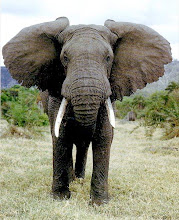Since tribal goods cannot be taxed within reservation borders, people went to tribal smoke shops to buy their cigars and cigarettes because they were cheaper. Smoke shops gained a fair amount of income, but not enough to pull Native Americans out of their endless cycle of poverty. So, Seminoles began high stakes gaming. High stakes gaming is Class Three gaming which involves casinos. The Seminole Tribe of Florida opened the first bingo hall at 5 pm December 14, 1979. They also began all Native American gaming in general. There are three classes of gaming covered in the 1988 Indian Gaming Regulatory Act. Class One gaming consists of traditional Native American games connected with tribal ceremonies or celebrations, and games that solely for prizes of minimal value. Class Two gaming consists of bingo which is played for prizes, with cards bearing numbers or other designations, in which the holder of the card covers such numbers or designations with objects, and in which the game is won by the first person covering a previously designated arrangement of numbers or designations on such cards. Class Three gaming consists of casinos and all games that are not Class One or Two. In order to have a casino and engage in gambling, a tribe must enter into a compact with the state that the tribal lands are located in. Also, the type of gaming they wish to engage in must not be outlawed by that state. Before 1979 the Seminole government distributed less than $2 million to its tribal members, most of it federal grants. By 2006, tribal net income surpassed $600 million. Also in 2006, the Seminole Tribe of Florida purchased Hard Rock Café for $965 million. As an effect of this economic independence, the Seminoles now run their own schools, shops, and government. They created a constitution in 1957, becoming like our government, but still maintaining their culture. The curriculum of the tribally run schools include the English language as well as Miccosukee and Creek, the two languages Seminoles speak. Seminole children are taught science and math alongside traditional religion and dances. The Ah-Tah-Thi-Ki Museum was opened on August 21, 1997 to house and exhibit tribal artifacts and other things that were dug up from grave sites and just recently returned to the tribe under the Graves Protection and Repatriation Act. Another example of how economic independence effects tribal sovereignty is the Seminole Tribune, the tribal newspaper. With the $600 million a year the tribe is currently making, no longer are they dependent on government funds and programs to survive. Now the tribe can fund their own support programs and schools, making money and preserving their culture and traditions in the next generation.
Subscribe to:
Post Comments (Atom)

No comments:
Post a Comment